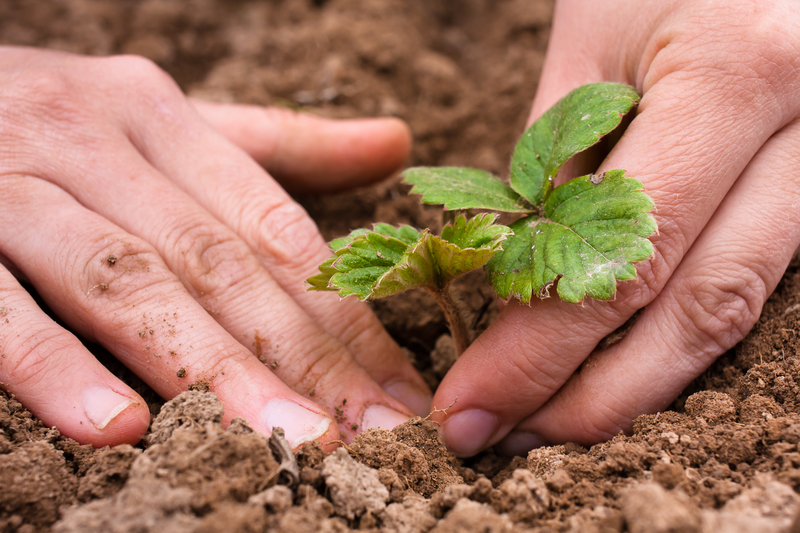Building a Secure and Playful Garden for Young Explorers
Posted on 01/09/2025
Building a Secure and Playful Garden for Young Explorers
Are you a parent or guardian eager to introduce your children to the wonders of the outdoors? Creating a safe and engaging garden for young explorers opens up a world of learning, fun, and adventure--right in your backyard. This comprehensive guide will walk you through how to design a secure and playful environment for kids, ensuring their safety and nurturing their natural curiosity. Let's dig into the best strategies for building a kid-friendly garden oasis.
Why Build a Kid-Safe and Playful Garden?
Childhood is defined by curiosity, discovery, and endless energy. Gardens provide ideal settings for exploration, but safety must always come first. Constructing a garden tailored for children not only keeps them away from harm, but also stimulates physical, emotional, and intellectual development.
- Physical Health: Outdoor play encourages activity, boosting fitness and coordination.
- Learning: Nature introduces science, biology, and environmental awareness in an authentic setting.
- Social Skills: Shared garden activities foster teamwork, communication, and responsibility.
- Mental Well-being: Fresh air, sunlight, and the calming effect of green spaces support emotional balance.

Planning Your Playful and Secure Garden
Assess Your Space
Before planting seeds or installing swings, conduct a thorough assessment of your garden:
- Size & Layout: Identify open spaces, shaded spots, and potential hazards.
- Accessibility: Ensure easy access for children and adults--consider pathways and visibility.
- Existing Features: Take note of trees, flower beds, water supplies, and any permanent structures.
Set Clear Boundaries
Establish physical boundaries to define safe play zones and keep children within sight:
- Fencing: Choose smooth, durable fencing free from sharp edges or gaps. Check for rusty nails or protrusions that could cause injury.
- Gates: Install self-closing, childproof gates with sturdy locks.
- Natural Borders: Use hedges or raised beds as gentle, attractive dividers.
Choosing Child-Safe Materials and Plants
Non-Toxic Plants and Flowers
Some common plants can be dangerous if touched or ingested by children. When designing your secure play garden, choose non-toxic, child-friendly plants and educate your little ones about garden safety.
- Safe Choices: Sunflowers, marigolds, snapdragons, violas, nasturtiums, and pansies.
- Edible Options: Strawberries, cherry tomatoes, peas, carrots, and mint.
- Avoid: Foxgloves, lily of the valley, yew, hydrangea, and digitalis--these can cause serious harm if ingested or touched excessively.
Safe Surfaces for Play
Minimize bumps and scrapes by selecting the right ground cover.
- Grass: Soft, forgiving, and perfect for barefoot escape artists.
- Rubber Mulch: Provides effective shock absorption under climbing frames or swings.
- Play Sand: Excellent in play pits and digging corners--ensure it's clean and regularly refreshed.
- Bark Chips: Natural, soft, and eco-friendly, but check regularly for splinters and maintain depth for cushioning.
Kid-Friendly Hardscaping
Hard surfaces are unavoidable but can be managed:
- Paving: Use non-slip, smooth slabs or stones and avoid sharp gravel.
- Pathways: Create winding paths with wood rounds or bricks to inspire exploration and safe wandering.
- Raised Beds: Keep edges smooth and at a child-friendly height for easy participation in planting and harvesting.
Garden Features to Encourage Exploration and Play
Inspiring Play Structures and Imaginative Spaces
A playful children's garden is not complete without features that ignite creativity and physical activity. Consider these possibilities:
- Sand and Mud Kitchens: Encourage tactile learning and imaginative role-play with designated digging or "cooking" areas.
- Treehouses and Forts: Provide places for adventure, reading, or quiet reflection--ensure they're built with proper railings and safe ladders.
- Climbing Frames and Slides: Support gross motor skill development--check for anchorage and smooth surfaces.
- Hiding Spaces: Tunnels made from woven willow or shrub archways can turn a garden into a magical land.
- Balance Beams and Stepping Stones: Arrange logs or stones for balancing and jumping, always with a soft landing below.
Wildlife and Sensory Gardens
Foster a sense of wonder by bringing wildlife into your play garden:
- Bug Hotels: Simple structures with twigs, leaves, and bamboo attract beneficial insects.
- Bird Feeders and Baths: Safe, accessible locations offer abundant bird-watching opportunities.
- Pondless Water Features: Bubbling stones or shallow streams provide sensory delight without drowning risks.
- Scented Plants: Lavender, rosemary, and lemon balm enrich sensory experience--plant them where children can touch and smell freely.
Vegetable Patches and Mini Greenhouses
Teach sustainability and healthy habits by including an edible garden section:
- Easy-to-Grow Crops: Radishes, lettuce, bush beans, and sunflowers are quick to germinate and exciting for kids to harvest.
- Pots and Raised Planters: Place them at child height for easy tending--decorate together for personal pride.
- Small Greenhouses: Transparent domes or boxes let children watch seeds sprout, reinforcing STEM learning.
Safety First: Essential Tips for Child-Friendly Gardens
Addressing Water Hazards
While water features are beautiful, even shallow ponds can pose serious risk to young children. If you include water:
- Fencing: Surround ponds or streams with protective barriers at least 1.2 meters high.
- Shallow Only: Opt for bird baths, bubbling rocks, or splash pads instead of deep water.
- Cover Up: Use sturdy mesh covers or removable grates for any open water.
Toy and Tool Storage
Keeping the play area tidy reduces trips and falls and limits access to dangerous items:
- Weatherproof Bins: Store balls, buckets, and small toys in lidded, ventilated containers.
- Lockable Sheds: Keep sharp garden tools, fertilizers, and chemicals behind childproof locks.
- Clear Pathways: Routinely clear debris, fallen branches, and stray toys from paths and lawns.
Shade and Sun Protection
Protect young explorers from harmful UV rays:
- Shade Trees and Structures: Plant fast-growing trees or install canopies, sails, or pergolas over play equipment and sandpits.
- Hats and Sunscreen: Encourage sun-smart behaviors--keep hats and SPF 50+ sunscreen nearby at all times.
- Play at the Right Time: Limit outdoor play during peak sun hours (10 am to 4 pm) in summer months.
Supervision and Accessibility
Even the safest garden requires adult oversight:
- Clear Sight Lines: Arrange play structures and seating so children are always visible.
- Seating for Adults: Place benches or chairs within easy reach to encourage active supervision.
- Easy Emergency Access: Keep entrances and paths wide enough for strollers or emergency vehicles if needed.
Involving Kids in Building Their Own Secure and Adventurous Garden
Encourage Ownership and Creativity
- Let Them Choose: Allow children to pick plants, colors, or themes for their own mini-garden space.
- DIY Projects: Decorate pots, create fairy houses, or paint stepping stones together.
- Learning Opportunities: Teach safety rules as you build--show which plants are safe to touch or eat, and which are off-limits.
Seasonal Activities to Spark Interest
Take advantage of the changing seasons to keep your safe play garden exciting all year:
- Spring: Sow quick-germinating seeds, build bug hotels, and plant butterfly-friendly flowers.
- Summer: Organize scavenger hunts, splash in water tables, and host picnics in shady spots.
- Autumn: Collect colorful leaves, grow pumpkins, and make bird feeders from pine cones.
- Winter: Install solar fairy lights, study animal tracks, or build miniature igloos from snow or mulch.

Maintaining a Secure and Playful Outdoor Space for the Long Run
Routine Safety Checks
- Inspect Fences: Check for loose boards, sharp nails, or gaps big enough for a child to squeeze through.
- Monitor Surfaces: Rake mulch, fluff sandpits, and ensure rubber mats stay in place.
- Prune Plants: Remove dead branches, trim thorny shrubs, and uproot any hazardous volunteer plants.
Adapt the Garden as Children Grow
Children's needs and interests evolve rapidly:
- Update Play Equipment: Replace baby swings with climbing frames or gardening stations as your child's abilities advance.
- Create New Challenges: Add balancing logs, dens, or sports nets for older children.
- Replant and Refresh: Swap out easy-care annuals for more challenging crops or wildlife-friendly shrubs as curiosity matures.
Conclusion: A Secure and Playful Haven for Young Adventurers
Building a secure and playful garden for children is an investment in their safety, education, and happiness. With thoughtful planning, regular maintenance, and a dash of creativity, your garden can become a magical landscape where young explorers cultivate resilience, wonder, and cherished memories.
By incorporating child-safe materials, exciting features, and ongoing engagement, the right outdoor environment nurtures growth at every stage. Start small, involve the whole family, and watch your secure, adventurous oasis blossom--one season at a time.
```
